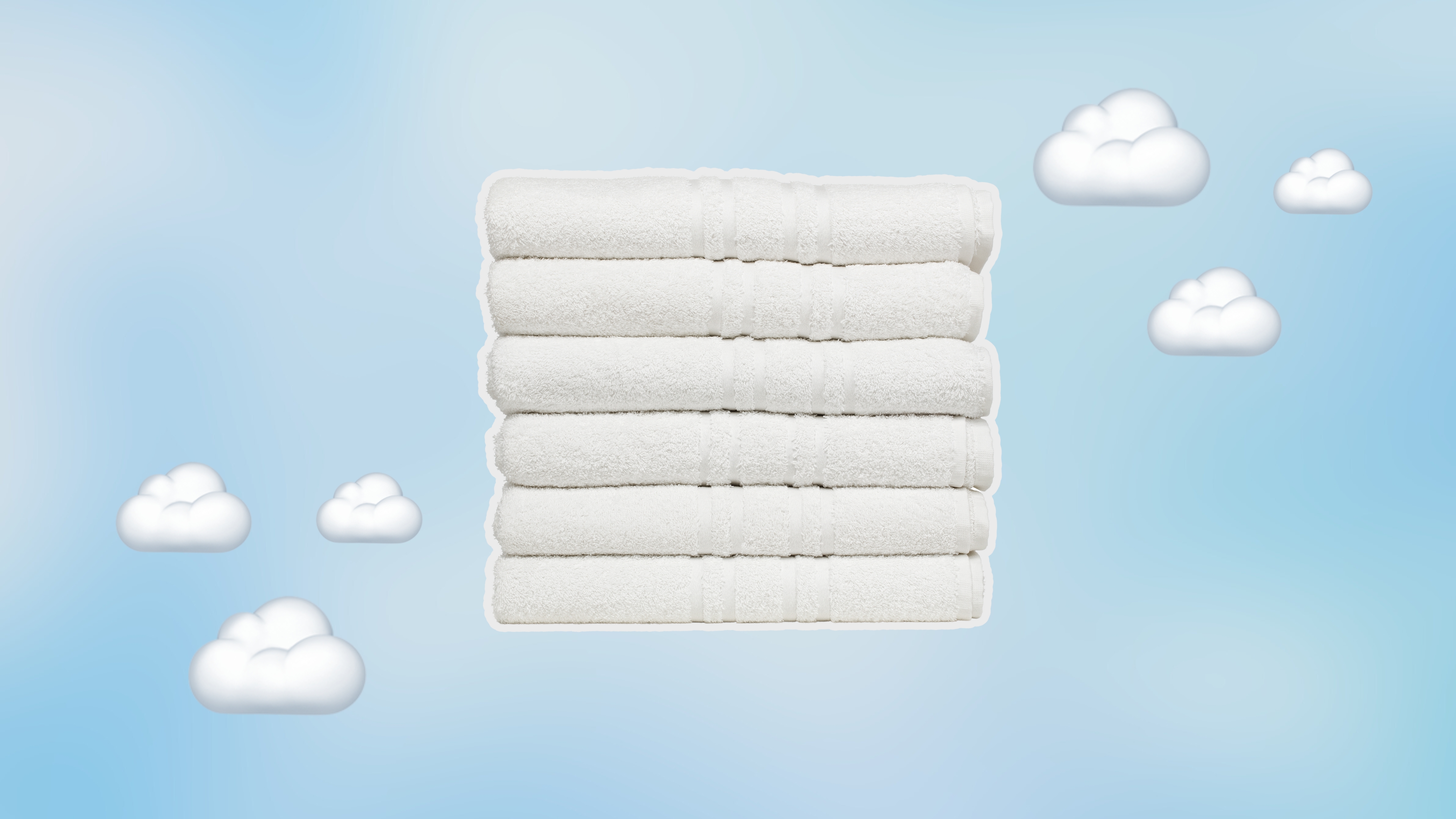How to wash towels for perfect results every time
Fluffy AF


POV: You’ve just moved out of your parent’s home and into dorms or a place of your own, which means that the time has come to do your own laundry. You’ve got no problem with this but you’ve noticed that your favorite towels aren’t coming out as fluffy as the ones at home, and you’re wondering what you’re doing wrong.
Don’t panic, towels are (strangely) hard to wash for such a basic item. If you use the wrong temp they don’t feel clean. And too much detergent can make the fibers feel crispy rather than fluffy. Then there’s that weird musty smell if you don’t get the drying process right. Nailing the whole towel-washing process can feel hella stressful.
That said, once you’ve got it worked out, it becomes a cinch. To help you to nail the laundry, we've put together this quick and handy guide.
How to wash towels and microfiber towels
Good to know
Time: 15 minutes (plus the washing and drying cycle times)
Difficulty: Easy
Helpful hints: Make sure to separate out your white towels from your colored towels before washing them. Oh and, FYI, make sure that each towel is properly dry before putting them away or else you'll be left with towels that feature an awful musty smell.
Here’s what you’ll need
- Laundry detergent (this Amazon Basics laundry detergent would work perfectly)
- Stain remover (this Tide stain remover that's available at Amazon will do the job)
- White vinegar (we always like to recommend this Heinz white vinegar from Amazon)
- Wool laundry balls (these Handy Laundry Store wool balls from Amazon should work well)
How to wash towels (inc. microfiber cloth towels)
Whether you're washing traditional cotton towels or microfiber towels, the steps below will ensure that they come out of the wash wonderfully soft and fluffy.
Get small space home decor ideas, celeb inspiration, DIY tips and more, straight to your inbox!
Step 1: Separate your towels
Don’t make the mistake of washing white towels with colored towels, unless of course, you want to see your white towels take on a grimey gray hue. So, the first step is to separate your towels into two piles — colors and whites.
Step 2: Treat any stains
If you’ve noticed any stains on your towels, soak the affected area in cold water and then use a color-safe stain remover (like this Tide stain remover that's available at Amazon and comes highly recommended) to pre-treat the stains before washing the towels. Leave the stain remover to sit for the required time before washing the towels.
Step 3: Place in washing machine
Once any stains have been treated, the next step is to put the towels (either your colored towels or white towels) into the washing machine.
Step 4: Add detergent and fabric softener
Next, add a mild laundry detergent (like this Amazon Basics laundry detergent) and a small amount of fabric softener — or alternatively, you can use white vinegar (we always like to recommend this Heinz white vinegar from Amazon). To avoid softener building up on towels and impacting their fluffiness, it’s a good idea to only use fabric softener every third wash.
Step 5: Remove the towels from the washing machine and dry them
Once the wash cycle has finished, remove the towels from the washing machine and shake each towel out, before placing them into your dryer with laundry balls (like these Handy Laundry Store wool balls from Amazon) or, if you don’t have laundry balls, tennis balls work just as well and should leave towels wonderfully soft and fluffy.
FAQs:
What temperature should you wash towels at?
For best results, white towels should be washed at a high temperature (the hot water helps to keep white towels looking white), whereas colored towels should be washed at a warm temperature.
How do you keep towels soft and fluffy?
To keep towels soft and fluffy it’s important to remove any residue build-up from detergents and softeners. Every few washes add some white vinegar to the washing machine instead of detergent and this should remove any build-up.
How do you make white towels white again?
If you’ve noticed that your white towels look a little gray, you can soak them in a mixture of baking soda and water before washing them in the washing machine. You can also add a small amount of baking soda to the wash cycle.

Hi! I’m Beth Mahoney and I’m a former staff writer at Real Homes. I’ve been a journalist for the national press for the past six years, specializing in commerce and trends-related lifestyle articles, from product reviews and listicles to guides and features. With an eye for pretty things (think: quirky wall prints, scalloped edge furniture, and decadent-looking tableware) but a limited budget, I love nothing more than a bargain buy.